FAQS
FREQUENTLY ASKED QUESTIONS
HOW DO I ENSURE I BUILD AND INSTALL THE DUCT TO THE REQUIRED STANDARD?
Full training is given by Firemac on the fabrication and installation of Firemac FM Fire Ducts, and retraining is conducted at regular intervals. Training is also available for the Firemac FM Blue products and systems. Technical support is always available for all products and systems at no cost in most cases.
There are a series of Technical Manuals providing full information on selecting the correct manufacturing specification for the specified fire performance and includes detailed installation instructions. These manuals are currently available for Firemac FM Duct systems and Firemac FM Blue systems. A manual for Firemac FM Fire Stopping will be available shortly.
WHAT ARE THE TEST STANDARDS FOR FIRE RESISTANT DUCTWORK?
When completely contained within the fire compartment, ductwork must be capable of resisting the anticipated temperatures generated during the development of a fire. Test Standards include BS 476: Part 24: 1987, EN 1366-Parts 1, 8, 9 and UL 6944.
HOW DO I KNOW FIREMAC FM FIRE DUCTS WILL PROVIDE THE SPECIFIED FIRE PROTECTION?
Firemac FM Fire Ducts are tested to BS 476: Part 24: 1987 (ISO 69441985) and to EN 1366-Parts 1, 8, 9. The Building Research Establishment (BRE) assessment report CC 283899 issue 2 summarises all the fire resistance tests that have been carried out on the Firemac FM Fire Duct systems and describes in detail the range of duct systems that they consider will provide the stated fire performance. Copies of the assessment are available on request.
In addition, Firemac FM Fabric is produced under a third party certification scheme operated by IFC (International Fire Consultants) Certification Ltd.
The duct systems are largely prefabricated in the workshop and installed on site by Firemac trained staff thus improving workmanship. Firemac offer a site inspection service on request.
WHEN DO I HAVE TO APPLY INSULATION?
Thermal / Acoustic insulation
If the insulation is only needed for thermal performance (e.g for air conditioning ducts) and not fire, then non-combustible insulation material should be used, e.g. a glass or rock mineral wool can be fitted over the fabric If acoustic insulation is being applied internally a Class O acoustic foam will normally be acceptable. (There is no requirement for internally fitted insulation to be non-combustible).
Fire Protection
However, if needed for fire protection, Firemac’s specification must be followed for the following reasons:
- The duct system, including the design of the steel ductwork, the fabric and the mineral wool, is tested and approved as a complete system. If the fabric is not used this would affect the requirements for the steel ductwork. For example, using the rock wool alone may require a thicker steel or more hangers.
- If the fabric is not used, then the insulation manufacturer would have to provide all the supporting test and certification evidence and technical support. If the fabric is used, then Firemac provide all of this.
- If most of the duct run does not need insulation then it makes sense to make the complete run as an uninsulated Firemac system, under controlled workshop conditions, and to apply the insulation on site in the limited areas required.
- If the mineral wool is damaged or removed during the life of the building, the Firemac system will still satisfy the stability, integrity (and smoke extract if required) performance specification keeping the building relatively safe until the mineral wool is replaced. If the Firemac system is not used and the rock wool is damaged or removed, then the duct will not satisfy any of these performance criteria.
WHAT IS THIRD PARTY CERTIFICATION?
Third Party Certification for manufacturers is a system which requires a competent and independent inspection body to carry out audits of the manufacture and supply of fire protection products and that they are being used in the correct applications. Third party certification companies based in the UK are accredited by UKAS.
Firemac FM Fire Ducts are Third Party Certificated by IFCC, a UKAS accredited and internationally recognised provider of third party Certification, with offices in the UK and UAE.
DOES THE TYPE OF DUCT MATTER WHEN CONSIDERING ITS FIRE PERFORMANCE?
Yes, as discussed in the examples below.
Smoke extraction systems handle the evacuation of products of combustion, which could otherwise pose a life risk. By ensuring breathable air and good visibility, smoke extraction systems aid in evacuation of the building’s occupants and allow fire-fighters to locate the seat of the fire. To extract an adequate volume of smoke and hot gases it is important that as much of the duct’s cross sectional area is maintained. This may mean that the design of the steel ductwork used with the Firemac smoke extract system is more robust than the design used when the Firemac system is used as normal ventilation ductwork.
Dual ventilation/smoke extraction systems serve as a conventional ventilation system under normal conditions but convert to a smoke extraction system in the event of a fire. In this case one must remember to design for the smoke extract function of the duct as discussed above.
Car-park extraction systems which must be both separate and independent, are obligatory in car-parks which require mechanical ventilation to expel polluted air. Due to the fire risk associated with car-parks, these systems should be treated as smoke extract systems and therefore maintain a 75% cross-sectional area under fire conditions in accordance with BS 476: Part 24: 1987 and ISO 6944: 1985 or 90% when using EN 1366-Parts 1, 8 or 9. Generally fire dampers are not to be installed in extract ductwork serving car-parks.
Kitchen extract systems are a major source of fire spread through a building. The grease and oil entering the duct requires that dampers cannot be used and that adequate access panels must be provided for regular cleaning.



